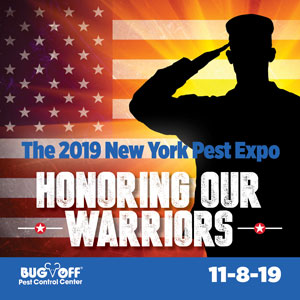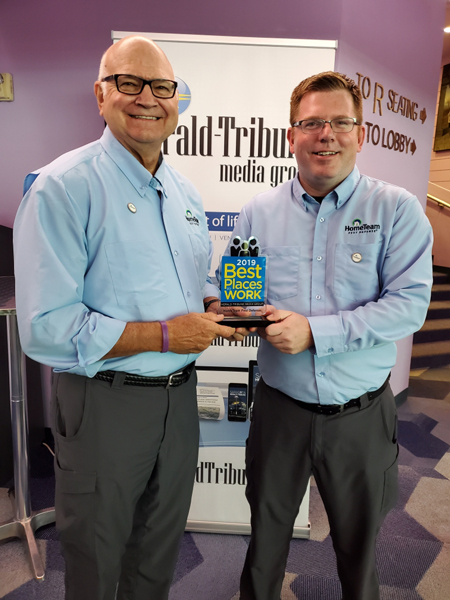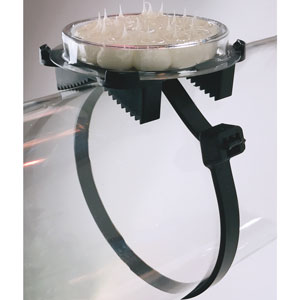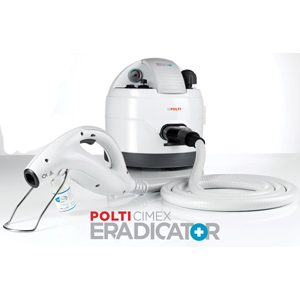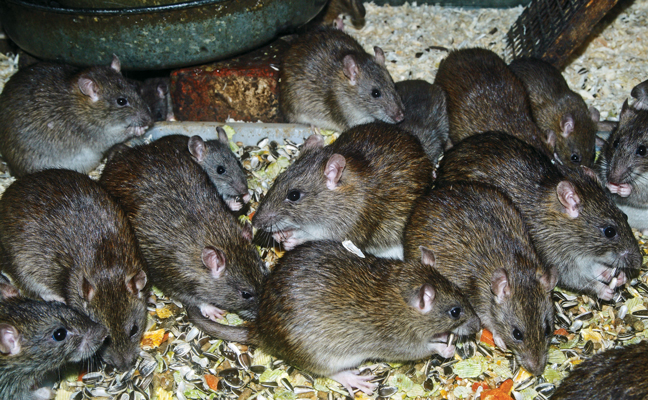
PHOTO: M ROSE/SHUTTERSTOCK.COM
California has a serious rodent problem — one that state legislators almost made worse.
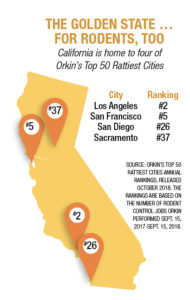
Click to enlarge. ILLUSTRATION: ISTOCK.COM/ZAK00
Surprising many, state legislators in California recently shelved Senate Assembly Bill 1788. Dubbed the California Ecosystems Protection Act, AB 1788 would have banned the use of second-generation anticoagulant rodenticides (SGARs) in the state, as well as the use of first-generation anticoagulant rodenticides on state-controlled property. Activist groups maintain anticoagulant rodenticides have an “adverse impact” on non-target animals, including mountain lions, bobcats, foxes, raptors, hawks and owls.
The bill was close to becoming law — until mid-August, when it was suddenly taken off the hearing schedule for the Senate Appropriations Committee. The committee was the last stop before reaching the Senate floor for a vote and Gov. Gavin Newsom’s desk for his signature. Reportedly, the California Environmental Protection Agency (Cal EPA) and Department of Pesticide Regulation (DPR) convinced the governor that signing the bill would lead to a public health disaster. The author of AB 1788, California State Assemblymember Richard Bloom (D-Santa Monica), apparently saw the writing on the wall and shelved the bill — for now.
“The very recent real-world example of the California Environmental Protection Agency building being infested with rodents and in need of second-generation anticoagulant rodenticides to manage the infestation, should tell you all you need to know: Reasonable people should not enact this terrifying text into law.” —National Pest Management Association (NPMA)
Five years ago, California banned consumers from using SGARs containing the following active ingredients: brodifacoum, bromadiolone, difenacoum or difethialone. This year, state legislators also tried banning pest management professionals (PMPs) from using them, too.
Meanwhile, rodents reportedly are running rampant on the Cal EPA property in Sacramento and other news reports indicate California is battling increases in rat populations and rodent-borne diseases. (Editor’s note: Read more about the Cal EPA building in Sacramento battling a rodent infestation)
The fight to protect control tools is far from over, in California and elsewhere. In fact, a “copycat” bill already reportedly has been proposed in Massachusetts to study the effects of rodenticides on wildlife. While PMPs and industry suppliers recently received a stay of execution on further rodenticide restrictions in California, many expect to fight a fierce battle in 2020 and beyond to defend the pest control tools professionals need to protect public health and property.
Typhus, a disease that fleas on rodents can transmit, has been on the rise in California, especially among the homeless in downtown Los Angeles (LA). Some police officers and attorneys who work at a courthouse near LA’s homeless population reportedly have contracted typhus and filed related lawsuits.
Experts’ takes
We asked pest management professionals and pest control industry advocates for their perspectives on the proposed legislation.
Dr. Bobby Corrigan

Dr. Bobby Corrigan
Urban Rodentologist, RMC Pest Management Consulting, New York, and PMP Hall of Famer (Class of 2008)
Regardless of the premise, California got it wrong. They were going to restrict in the structural arena and give agricultural users a pass. That’s somewhat of a flip-flop. I would think the ramifications of rodenticides on coyotes, mountain lions and raptors is related to massive and casual agriculture applications. Farmers throw rodenticides in barns, in chicken coops and in the fields. Hawks and owls are flying over massive fields crawling with voles and mice.
California is one of the most important agricultural states. But other than “follow the label,” there is no regulation; that should have been stopped a long time ago. To apply pesticides on their land, they are certified — but they also are applying rodenticides, which is a whole different ball game. That’s the issue: There are no checks, measurement or inspections, and they are applying in massive amounts.
By contrast, pest management professionals (PMPs) are putting rodenticide in bait stations and using very small amounts. I would have favored a ban on second-generation anticoagulant rodenticides (SGARs) for the agriculture community, and left their use by PMPs open to protect public health.
In the city, we’re dealing with rodents coming up from sewers. Thank goodness the legislation got tabled. Having said that, PMPs in our industry — no matter what state you’re in — have a responsibility to know the threat of SGARs. For example, in New York City, SGARs no longer apply for use on rats in city parks. The hawks know it’s easy pickings when they see slow rats dying.
They drop out of a tree and count on the slow rat, mouse or squirrel. Our industry should be very careful, and maybe even restrict use.
Integrated pest management (IPM) is recommended. Exclusion, sanitation and then pesticides and rodenticides when needed. That’s the key. For a large retail customer, for example, rather than set baited boxes about 30 feet apart, we set the boxes with snap traps, to see which ones were catching rodents and which ones were not before we brought in the “high-powered guns.” That’s what the SGARs are, high-powered guns.
People see rodent boxes and assume “poison” is in them. When we use traps and/or monitoring blocks inside them instead, we should be labeling those boxes as “biomonitoring for rodents,” so they understand there’s nothing toxic inside.
Yet, how many technicians are trained to perform an assessment first, instead of jumping into treatment after a brief inspection? It’s a whole different ball game, and maybe it should be our new focus. We claim to be environmentalists, and we need to show it.
Mike McKenzie

Mike McKenzie
Assistant Region Manager, Orkin, Riverside, Calif., and President, Pest Control Operators of California (PCOC) Executive Staff
Discussions continue. We are working toward a resolution that protects both public health and wildlife. If the legislation would have passed, I believe several states would have experienced similar bills being introduced. The proposed legislation would have a significant impact on PMPs in California. SGARs are a viable option for PMPs to utilize to reduce rodent populations. More important, the impact on public health would be significant.
When you look at what is happening in Los Angeles with typhus and other “medieval” diseases, it is extremely concerning — particularly for PMPs, who are in business to protect people, property and the food supply.
Dr. Niamh Quinn

Dr. Niamh Quinn
Human-Wildlife Interactions Advisor University of California Cooperative Extension, Irvine, Calif.
There have been several iterations of bills in California over the past four years. Most of them are targeting anticoagulant rodenticides, although they morphed along the way; they started with all of the rodenticides, and now they’re particularly focused on SGARs. As it was written, AB 1788 proposed serious restrictions on the use of SGARs, with some fairly limited applications throughout the state. In essence, it would have been an almost total ban of SGARs for structural pest control.
Generally, it is very difficult to reverse a bill in California. There are many serious rodent issues in California right now. California has always had a lot of roof rats and Norway rats in metropolitan areas. Now, we’re seeing outbreaks of typhus in Los Angeles, especially downtown among the homeless population. There are a lot of examples of people who have contracted typhus as a result of contact with rats.
Rodents are difficult to manage — even with all of the tools we currently have. Taking away any of those tools is not a good idea. People think they’re never going to get typhus, or there are no rats in the areas they occupy, but there are rats everywhere. Without the full toolbox, rodent control is going to become extremely difficult.
California is an incredible place to live; we have wildlife right at our back door in many areas. When wildlife gets exposed to rodenticides or dies from rodenticide intoxication, that’s a big deal.
It’s not that it’s difficult to convince people that we need to control rodents and that these tools are important. But it’s necessary to have a balance where we need to protect wildlife, but we also need to protect public health. At this minute, we don’t really have the information to do both. We’re finding exposure to anticoagulant rodenticides in a lot of wildlife in a lot of different states.
While I believe rodenticide is a very important tool for rodent management, and there is a place for it, that place is not in wildlife. California has created rodenticide restrictions in an effort to reduce rodenticide exposure, and it appears that it is either not working or that we haven’t been able to collect the data to show any successes associated with these regulations.. A lot more research and information is needed to figure out what the pathways of rodenticides are, and what their effects on wildlife are.
Darren Van Steenwyk, BCE

Darren Van Steenwyk, BCE
Technical Director, Clark Pest Control, Lodi, Calif.
The concern is that something like this opens the door for regulation through legislation. This situation is uncharted territory: We don’t know what impact it will have on the industry as a whole if the success of banning a single class of chemistry through legislation vs. going through the regulatory agencies is successful. It isn’t following the process we’re used to.
Once you ban a product, there has to be overwhelming evidence to show that it has to be brought back. If that happens, it will be brought back only in very limited amounts. Typically, once it’s gone, it’s gone.
In 2014, California removed SGARs from over-the-counter access by general consumers because the state needed to come up with some sort of mitigation to address secondary wildlife exposure.
But there wasn’t a lot of data or information to point to specific use patterns. The assumption was over-the-counter use was leading to the secondary wildlife exposures. But in subsequent years, science has been presented that secondary wildlife exposures have not decreased.
As a result, environmental activists have said, “We’ve removed it from over-the-counter use; only professional uses have been allowed. The secondary wildlife exposures or non-target exposures have not decreased. Therefore, the professional uses are leading to this. Therefore, we have to remove professional use of SGARs in the state.” We know it’s not nearly as black-and-white as the case being presented by some. Scientific information may or may not support that statement.
Right now, we don’t know the pathway from the bucket in which the bait starts to that urban predator. Banning products without that information is providing a solution for a problem, and we don’t know what that problem is. The bill kept changing status because of conversations behind closed doors we were not privy to. It’s inside baseball at this point — there are dynamics at play we don’t have any control over. But we have to be open and willing to talk when anybody’s willing to talk.
Normally, we work as hard as we can, and it stays in the regulatory agency, the Department of Pesticide Regulation. The fact that the bill got as far as it did without that says something. Because this is the fifth time we’ve seen a bill like this; each iteration changed based on the conversations and arguments. When it gets to that point, it moves further along, and now it has moved much further along than we anticipated. We figured AB 1788 was going to die in the Senate assembly, but the bill actually had tremendous support within the assembly, a lot more than we were expecting.
Sylvia Kenmuir, BCE
Technical Services Representative – Professional & Specialty Solutions, BASF, and Rodenticide Taskforce Chair, Pest Control Operators of California (PCOC)
This goes back to 2014, when the original bill AB 2657 to ban the use of all anticoagulant rodenticides in state parks passed. In 2015, we had a second bill. And then every year we have been battling the issue, so PCOC created a Rodenticide Taskforce. We also created the West Coast Rodent Academy for industry stewardship.

Sylvia Kenmuir, BCE
We use the revenue from the West Coast Rodent Academy to fund research because we wanted to know more about rodenticide pathways and impacts on wildlife. That’s where we connected with Dr. Niamh Quinn at the University of California Cooperative Extension.
It’s unfortunate the public has such little respect for our industry. It’s disappointing, because we are science-based. It’s a technical job. That’s one of the things we’re trying to show through the Rodent Academy. We have 45 spots at the West Coast Rodent Academy, and we sell out every time. PMPs are eager to take three days out of their busy work schedules to learn how they can better manage rodents.
We have offered legislators amendments, including paying a fee for rodent control to help fund enforcement — something this state has done before with fumigations. We also offered to provide an additional hour of continuing education to ensure everybody is aware of the concerns with rodenticides. Another year will give us a chance to sit at the table and try and get state legislators to work with us.
We try to explain to legislators that you can’t get an exemption for a banned product. If it’s not registered, that’s one thing; it means that the Environmental Protection Agency (EPA) doesn’t have all of the things it needs, and you can get exemptions. But when a product is banned, there is no precedent to allow that product to be used again.
We want to make sure we’re protecting public health, because that’s what we’re in the business of doing. I don’t want to choose between wildlife and people. I want to figure it out so everything is protected.
But we are concerned. We know we will have rodent control tools left. But bans in general are never good because they set precedents we don’t necessarily want.
I know some people don’t like to hear it, but PMPs have to get involved. You have to pay attention. I went to a city council meeting in 2016 because someone said, “Hey, can you go to this meeting? They’re trying to ban rodenticides.” And I thought, “Sure they are.” But I came out of that meeting and I remember thinking: “This is bad. These guys are well organized.”
When I speak about this issue, some people say, “Oh, it’s just kooky California.” But I tell them, “You know, guys, California has moved to other states.”
You can’t just wait for your state associations to get involved. Go to your local city council meetings, listen to people who complain about whatever they don’t like about our industry, and bring that back to your association. Tell them “Hey, in my neck of the woods, this is what was going on.” Because that’s how this issue started for us.
The PMP staff can be reached at pmpeditor@northcoastmedia.net.
The post Industry advocates weigh in on California’s proposed rodenticide ban appeared first on Pest Management Professional.

from Pest Management Professional https://www.mypmp.net/2019/09/26/industry-advocates-weigh-in-on-californias-proposed-rodenticide-ban/
Sacramento CA
